What Were The Most Important Medieval Marketplace Rules?
Conny Waters - AncientPages.com - Visiting a marketplace in the Middle Ages could be a pleasant experience. However, honesty was crucial because practices such as fraud and theft were subject to harsh punishment.
In Medieval England marketplaces England, markets typically took place weekly.
Credit: Adobe Stock - lutjo1953
These marketplaces were excellent opportunities for buying and selling goods and also functioned as social hubs where people could interact with each other.
Medieval Practices Of Cutting Coins In Pieces
It was common knowledge there were special trading rules which everyone had to follow.
"Coin was increasingly important in the growing market economy of late medieval England and to ensure confidence in this medium of exchange the sovereign attempted to exert control." 1
Cheating with gold, silver or producing falsified coins were serious crimes. "In the tenth century, Aethelstan (929–39) was the first to declare that there should be one coinage in his realm and that money should be minted only in the towns ascribed. The penalty for base moneyers who produced light coins was for them to have their hand cut off and displayed on the mint." 1
In the past, small traders did not necessarily require a whole coin for their transactions. Instead, coins were often divided into smaller segments, which were then utilized for several payments, diminishing their practical value.
Everyone Could Be Punished
All cheaters, whether male or female, were punished. In England, moneylenders who imposed exorbitantly high-interest rates were subjected to public humiliation. They were bound to a chair and paraded around the market town. The mode of transportation used for this purpose was typically an open wagon, commonly utilized for carrying manure.
In Italian towns with narrow streets and little space, it was forbidden to throw meat on the ground.
In Florence, the butchers maintained cleanliness in their selling areas, ensuring no rotten remains were left behind. However, due to the value of meat scraps and other waste materials, cities would auction the cleaning rights of these squares. The highest bidder would then collect these waste materials for resale.
The success of a market also heavily depended on whether local authorities could enforce law and order. For instance, in Leicester, England, individuals who caused disturbances by drawing their swords within the market's vicinity faced stricter penalties than usual. In other places, visitors were prohibited from bringing weapons through city gates to maintain peace and order.
Illegal Marketplaces
"Some of these rural markets were associated with churches. In 1488, illegal markets held at the Cistercian nunnery of Skokloster and at a church called Ness were ordered to close. Christian churches that had replaced pagan cult centres continued to provide opportunities for buying and selling, although there is little direct evidence of Sunday trading in Scandinavia as there is in England.
Swedish market charters beginning in the late thirteenth century are concerned only with weekday markets (Ku/turhistorisk Leksikon, xviii, col. 480), but the thirteenth century law of Gotland provided for the sale on Sundays of cheese, butter, fish, fowls and meat, but not four, seeds or other goods. In1531 Gustav Vasa complained that illegal fairs were becoming so frequent that there would soon be one held at every church festival." 1
Price Controls
There were limits on how much a Medieval seller could demand for a product. To manage price fluctuations on basic products, a price cap was implemented on items like bread, wine, and beer.
Medieval market. Credit: Public Domain
The price ceiling would ensure that even the lowest classes of society could afford food, thus preventing rebellion. "Maximum prices of meat were occasionally set in a number of individual boroughs, perhaps drawing on statutory precedent, and showed how local price-fixing was sometimes tolerated." 1
In England, the pricing of essential products was determined by the King. He appointed two price controllers in every city throughout the kingdom. Their responsibility was to monitor marketplaces for fraudulent activities. If they discovered anyone attempting to charge more than the permitted price, punitive measures, including fines, were taken.
In the medieval marketplace, the rules were universal, applying to both sellers and buyers alike.
Written by Conny Waters – AncientPages.com Staff Writer
Copyright © AncientPages.com All rights reserved. This material may not be published, broadcast, rewritten or redistributed in whole or part without the express written permission of AncientPages.com
Expand for references- James Davis - Medieval Market Morality: Life, Law and Ethics in the English Marketplace, 1200–1500
- Tim Pestell, Katharina Ulmschneider - Markets in Early Medieval Europe: Trading and 'Productive' Sites, 650-850
- Dennis Romano - Markets and Marketplaces in Medieval Italy, C. 1100 to C. 1440
More From Ancient Pages
-
 Imhotep: Ancient Genius And Architect Of The Sakkara Pyramid
Featured Stories | Mar 7, 2016
Imhotep: Ancient Genius And Architect Of The Sakkara Pyramid
Featured Stories | Mar 7, 2016 -
 Cannabis Protected India’s Famous Ellora Caves From Decay For 1,500 Years
Archaeology | Mar 12, 2016
Cannabis Protected India’s Famous Ellora Caves From Decay For 1,500 Years
Archaeology | Mar 12, 2016 -
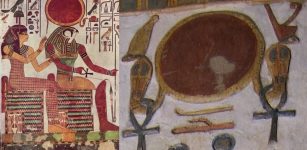 Eye Of Ra – Powerful Ancient Egyptian Symbol With Deep Meaning
Ancient Symbols | Jan 23, 2019
Eye Of Ra – Powerful Ancient Egyptian Symbol With Deep Meaning
Ancient Symbols | Jan 23, 2019 -
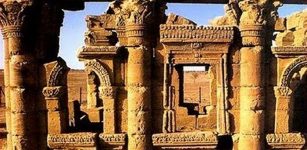 Ancient Great City Of Napata In The Kingdom Of Kush
Civilizations | Dec 30, 2015
Ancient Great City Of Napata In The Kingdom Of Kush
Civilizations | Dec 30, 2015 -
 Queen Dido Of Carthage: Founder Of Prosperous City On Africa’s Northern Coast
Featured Stories | May 21, 2020
Queen Dido Of Carthage: Founder Of Prosperous City On Africa’s Northern Coast
Featured Stories | May 21, 2020 -
 Early Humans Reached Northwest Europe 45,000 Years Ago – New Research Shows
Human Beginnings | Jan 31, 2024
Early Humans Reached Northwest Europe 45,000 Years Ago – New Research Shows
Human Beginnings | Jan 31, 2024 -
 Unlocking The Secrets Of Lost Prehistoric Land Hidden Beneath The Sea
News | Sep 8, 2015
Unlocking The Secrets Of Lost Prehistoric Land Hidden Beneath The Sea
News | Sep 8, 2015 -
 Circular-Shaped 4000-Year-Old Wooden Henge Discovered In Yorkshire, Historic County of Northern England
Archaeology | Jan 3, 2018
Circular-Shaped 4000-Year-Old Wooden Henge Discovered In Yorkshire, Historic County of Northern England
Archaeology | Jan 3, 2018 -
 Francis Drake, Queen’s Pirate And One Of The Founders Of English Naval Force
History | Apr 12, 2020
Francis Drake, Queen’s Pirate And One Of The Founders Of English Naval Force
History | Apr 12, 2020 -
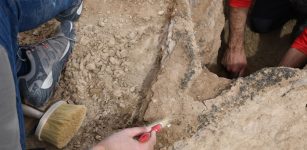 Unique, Well-Preserved 4,000-Year-Old Boat Discovered Near The Ancient City Of Uruk
Archaeology | Apr 4, 2022
Unique, Well-Preserved 4,000-Year-Old Boat Discovered Near The Ancient City Of Uruk
Archaeology | Apr 4, 2022 -
 Evidence For Milk, Meat, And Plants In Prehistoric Kenya And Tanzania
Archaeology | Apr 15, 2020
Evidence For Milk, Meat, And Plants In Prehistoric Kenya And Tanzania
Archaeology | Apr 15, 2020 -
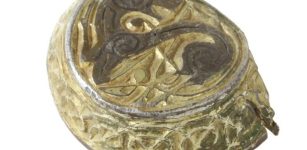 Strange 1,200-Year-Old Anglo-Saxon Artifact Used For Unknown Purpose Found In Norfolk, UK
Archaeology | Jan 18, 2024
Strange 1,200-Year-Old Anglo-Saxon Artifact Used For Unknown Purpose Found In Norfolk, UK
Archaeology | Jan 18, 2024 -
 Great Ruins of Zimbabwe: Unsolved Secrets Of Bizarre Buildings Without Windows And Doors
Civilizations | Jun 24, 2015
Great Ruins of Zimbabwe: Unsolved Secrets Of Bizarre Buildings Without Windows And Doors
Civilizations | Jun 24, 2015 -
 Unique 9,000-Year-Old Shrine With Symbols Discovered At Neolithic Ritual Site In Jordan Desert
Archaeology | Mar 7, 2022
Unique 9,000-Year-Old Shrine With Symbols Discovered At Neolithic Ritual Site In Jordan Desert
Archaeology | Mar 7, 2022 -
 The Vinland Map Is A Fake – New Evidence Uncovered By Scientists
Archaeology | Sep 21, 2021
The Vinland Map Is A Fake – New Evidence Uncovered By Scientists
Archaeology | Sep 21, 2021 -
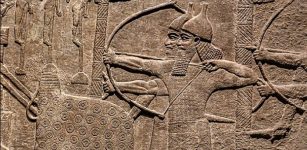 Tiglath Pileser III: Neo-Assyria’s Strong King Who Built A Mighty Empire
Featured Stories | May 2, 2019
Tiglath Pileser III: Neo-Assyria’s Strong King Who Built A Mighty Empire
Featured Stories | May 2, 2019 -
 New Chemical Reactions To Generate Building Blocks Of Proteins And DNA – Discovered
DNA | Jul 29, 2022
New Chemical Reactions To Generate Building Blocks Of Proteins And DNA – Discovered
DNA | Jul 29, 2022 -
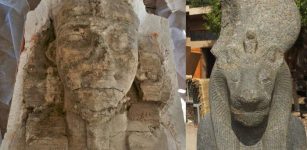 Two Giant Limestone Sphinxes Of Pharaoh Amenhotep III And A Statue Of Goddess Sekhmet Discovered In Luxor
Archaeology | Aug 11, 2022
Two Giant Limestone Sphinxes Of Pharaoh Amenhotep III And A Statue Of Goddess Sekhmet Discovered In Luxor
Archaeology | Aug 11, 2022 -
 Lofn ‘Matchmaker’ – Norse Goddess Of Forbidden Marriages Of People Who Wish To Be Loved And Search For Partners
Featured Stories | Mar 25, 2021
Lofn ‘Matchmaker’ – Norse Goddess Of Forbidden Marriages Of People Who Wish To Be Loved And Search For Partners
Featured Stories | Mar 25, 2021 -
 The Four Bases Of Anti-Science Beliefs – What Can Be Done About Them?
News | Jul 14, 2022
The Four Bases Of Anti-Science Beliefs – What Can Be Done About Them?
News | Jul 14, 2022


